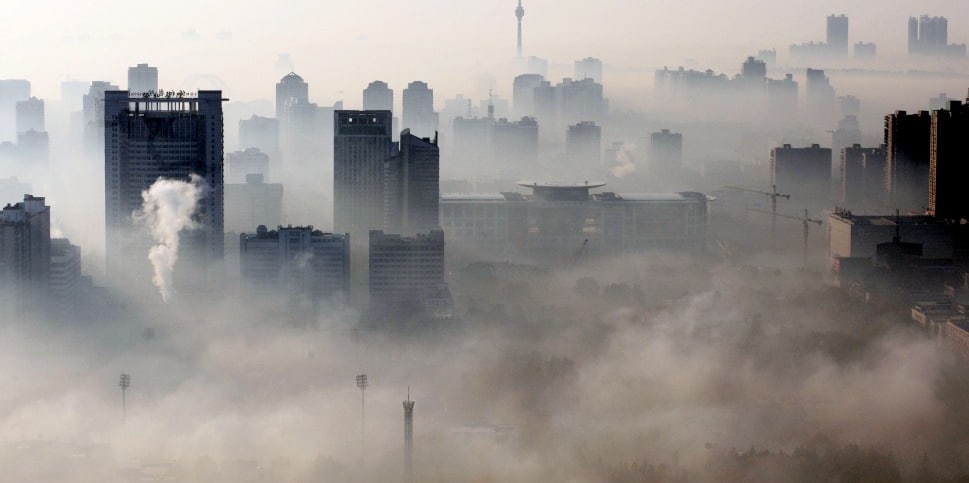As bunnies may recall, yesterday Eli asked what the problem with the new paper in Climate of the Past, Multi-periodic climate dynamics: spectral analysis of long-term instrumental and proxy temperature records by H.-L. Lüdecke, A. Hempelmann, and C. O. Weiss was. Eli has been very very disappointed that many of his readers had better things to do with their weekend than solve Rabett Run puzzlers, but yes, Andreas wins the prize.
The Lüdecke paper is rotten to the core. While some of the comments at Rabett Run (Chris
The Ludecke analysis is rubbish - the "projection of future NH temperatures mainly due to the ~ 65-yr periodicity" is the sort of tosh that no competent scientist would perpetrate, but which seems to be allowed in the nether regions of climate science, perhaps because editors are a little wary of calling a shovel a shovel in a rather contentious field.
I'm curious to know the siting of these temperature instruments in Prague, Vienna, Paris, Munich etc. Otherwise it seems somewhat dubious to use only the Kremsmunster data from the large set of temperature series that constitute the HISTALB Greater Alpine Series (GAR) of Auer et al. (2007) [Int. J. Climatology 27, 17-46]. Auer’s composite GAR temperature series (see Figure 12 of Auer
et al (2007) ) looks pretty close Eli’s composite of the Best Europe/Austria series.
…oh well. Take any old time series. Fourier transfrom it to pull out the frequency components and their amplitudes. Select the dominant frequency components and reconstruct a smoothed time series from these. You’re going to get something that matches your original series, irrespective of whether the system has intrinsic periodicity or not. What have you learned? Not much.
and
Nick Stokes) pointed out that the mathturbation was astounding, and Eli would not be surprised to see Tamino jump in, the DATA sucked, but it sucked for an interesting reason. Turns out that instrumental measurements before, say 1860 or so, tended not to be taken in shelters, but out in the open, with a variety of methods used. This produces a
well known warm bias in these measurements. The latest discussion of this can be found in a paper which Andreas pointed to,
The early instrumental warm bias: a solution for long central European temperature series 1760-2007 by R. Boehm, P.D. Jones, J. Hiebl, D. Frank, . Brunetti and M. Maugeri.
Instrumental temperature recording in the Greater Alpine Region (GAR) began in the year 1760. Prior to the 1850–1870 period, after which screens of different types protected the instruments, thermometers were insufficiently sheltered from direct sunlight so were normally placed on north-facing walls or windows. It is likely that temperatures recorded in the summer half of the year were biased warm and those in the winter half biased cold, with the summer effect dominating. Because the
changeover to screens often occurred at similar times, often coincident with the formation of National Meteorological Services (NMSs) in the GAR, it has been difficult to determine the scale of the problem, as all neighbour sites were likely to be similarly affected. This paper uses simultaneous measurements taken for eight recent years at the old and modern site at Kremsmünster, Austria to assess the issue.
In addition to the shelter issue, the orientation of the thermometer, the height off the ground and more have to be taken into consideration. Fortunately, enough information about the early measurements at Kremsmünster were available to allow a standardization and to spread that to other stations in the HISTALP network. Below is an updated figure showing the corrected data from Vienna (ten year smoothing) together with the BEST reconstructions for Austria and the "Lüdeckerous" Fourier fit.
Unfortunately Eli does not have the data from the 2007 reconstruction
that Lüdecke used, but he does have the figure that they published
showing a much higher relative anomaly at earlier times which can be
compared. The siting effects average about 0.4 C in the summer with little effect in the winter.
Four of the six stations that Lüdecke et al used are in the HISTALP network, Vienna, Munich, , Hohenpeißenberg, and Kremsmuenster. The other two, Paris and Prague suffer from the same ills.
What is interesting is that the BEST reconstruction appears to handle this problem. Going forward a combination of the BEST method and metadata adjustments may be superior to either method alone. In any case there is good reason to hope that we now have tools to handle inhomogenity in early instrumental climate records.
With this in hand, it should be possible to improve various multiproxy reconstructions using longer instrumental data bases for training and testing the reconstructions.
Georg Hoffman at
PrimaKlima discussed these problems and others a day earlier. He also printed a letter one of the referees Manfred Mudelsee, sent to the editors at Climate of the Past
” I am less pleased that this piece has been published in CP since I
believe that (even in its revised version) it has serious technical
flaws. I had appreciated if the handling editor had considered more
seriously my technical comments on CPD. Finally, I had appreciated if I
had been informed/shown the revised version sent to CP. Unrelated to the
technical flaws, one may speculate about (I exaggerate for clarity) the
hijacking of CP for promoting ‘skeptical’ climate views.
I would appreciate if you took me out of your database of CP(D) reviewers.”
Somewhat earlier, in a similar case involving Atmospheric Chemistry and Physics,
Eli had noted that the open review process requires that editors pay more attention to their reviewers comments
For those of us who favor the open review system, this will be a
disaster. The predictable outcome is that people are going to cite this
example as a reason to
throw ACP invitations to review into the trash pit. Open review
required that the referees put their reputations on the line. Their
reviews are out there for everyone to read. If the editors ignore them,
why do so?
He is not particularly pleased that the bunnies are coming home to roost.
If the audience would allow a brief digression, Eli knew nothing about the siting issue before reading the Lüdecke paper, but he had seen enough proxy temperature reconstructions and instrumental data sets to know that the upturn in the Lüdecke data set was not very likely. Using the BEST data set and cross checking with various spaghetti graphs, it became obvious that something was very wrong besides the mathterbation. The Rabett then read the interactive discussion and was curious to note that there was no discussion of the sheltering issue. Some searching, writing emails to others etc. followed to a reasonable conclusion.
In doing his due diligence Eli noted that the editor in charge of this paper was Eduardo Zorita. Now some bunnies may wonder why that is an issue. No, not that. It turns out that
Zorita is first author on a paper
European temperature records of the past five centuries based on documentary information compared to climate simulations. Climatic Change. (special
edition of the Millennium-project)submitted (2008-12) as part of the HISTALP project. How he let this paper through, over ruling the referees he selected, is hard to understand. Why he did not choose a referee who was involved in the HISTALP data base homogenization is even harder to understand without some really hard and potentially nasty thoughts.
To avoid these thought, Eli will offer Willard Tony a station picture from
a complete description of the homogenization procedures
The arrow points to where the old and reference measurements at Kremsmünster, were made.
 James Fallows points to a post on the Chinese imposition of a pollution emission tax. Fallows, who lived for several years recently in China and got to taste same, provides the talking points:
James Fallows points to a post on the Chinese imposition of a pollution emission tax. Fallows, who lived for several years recently in China and got to taste same, provides the talking points:

















